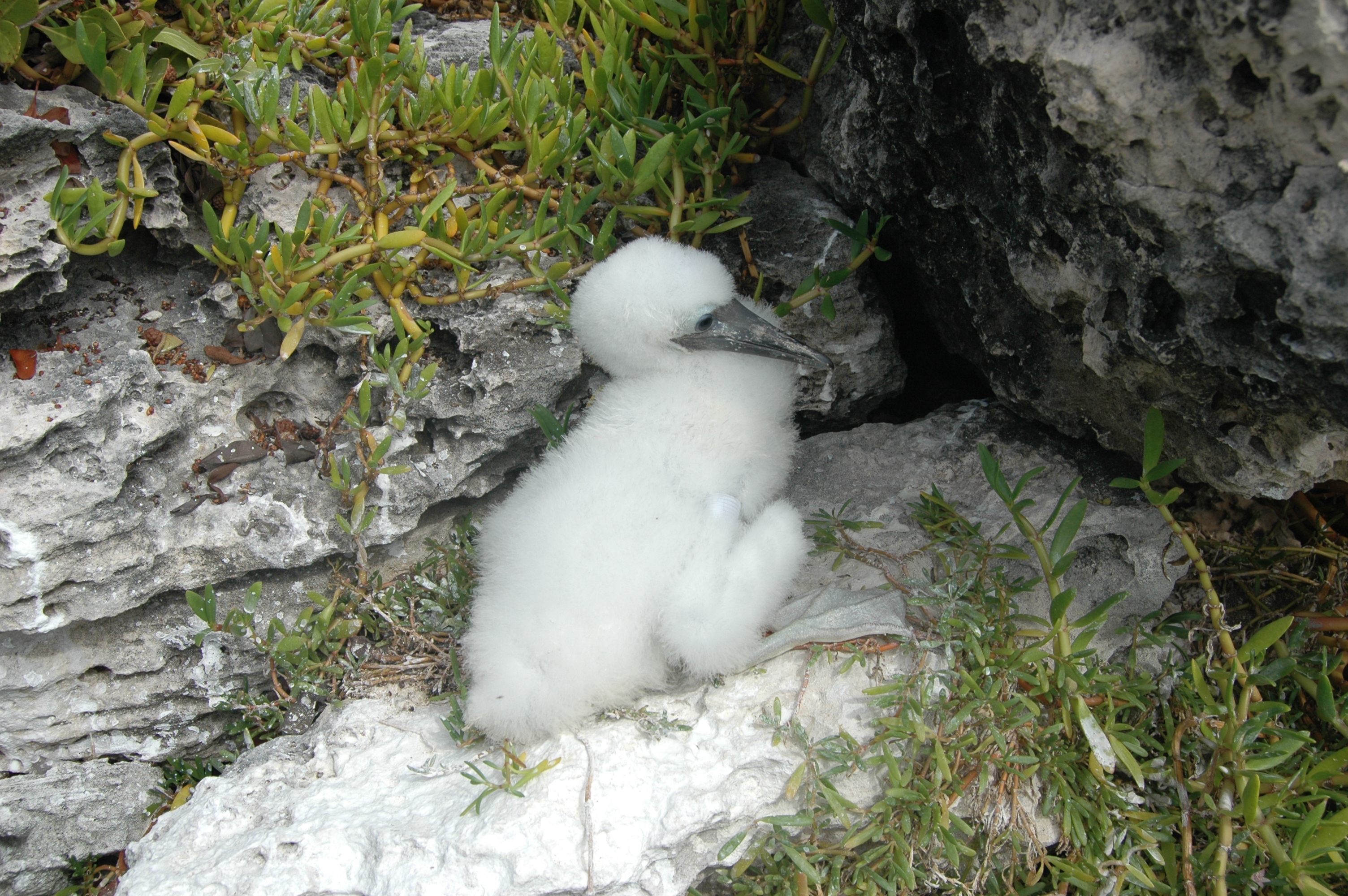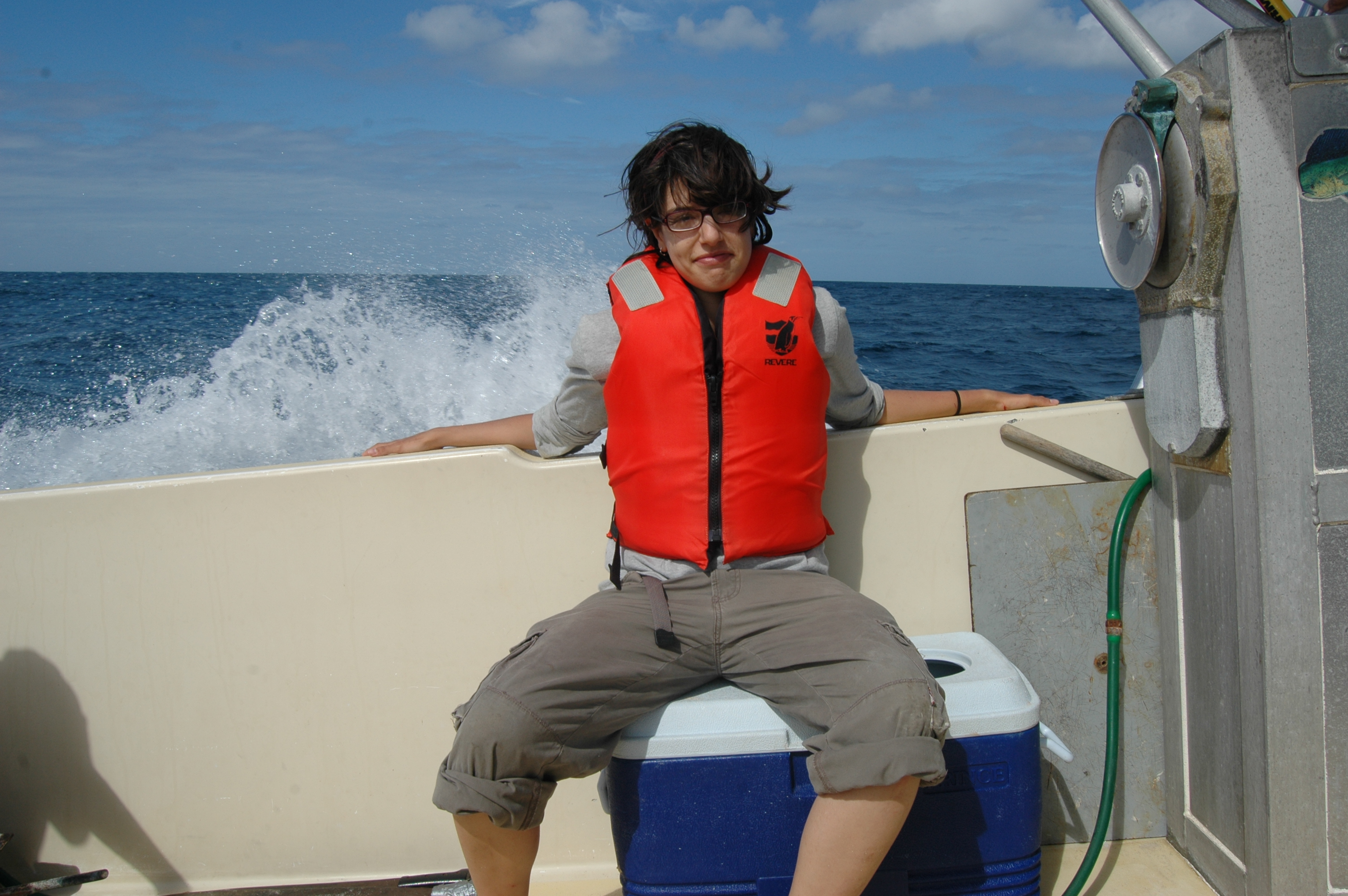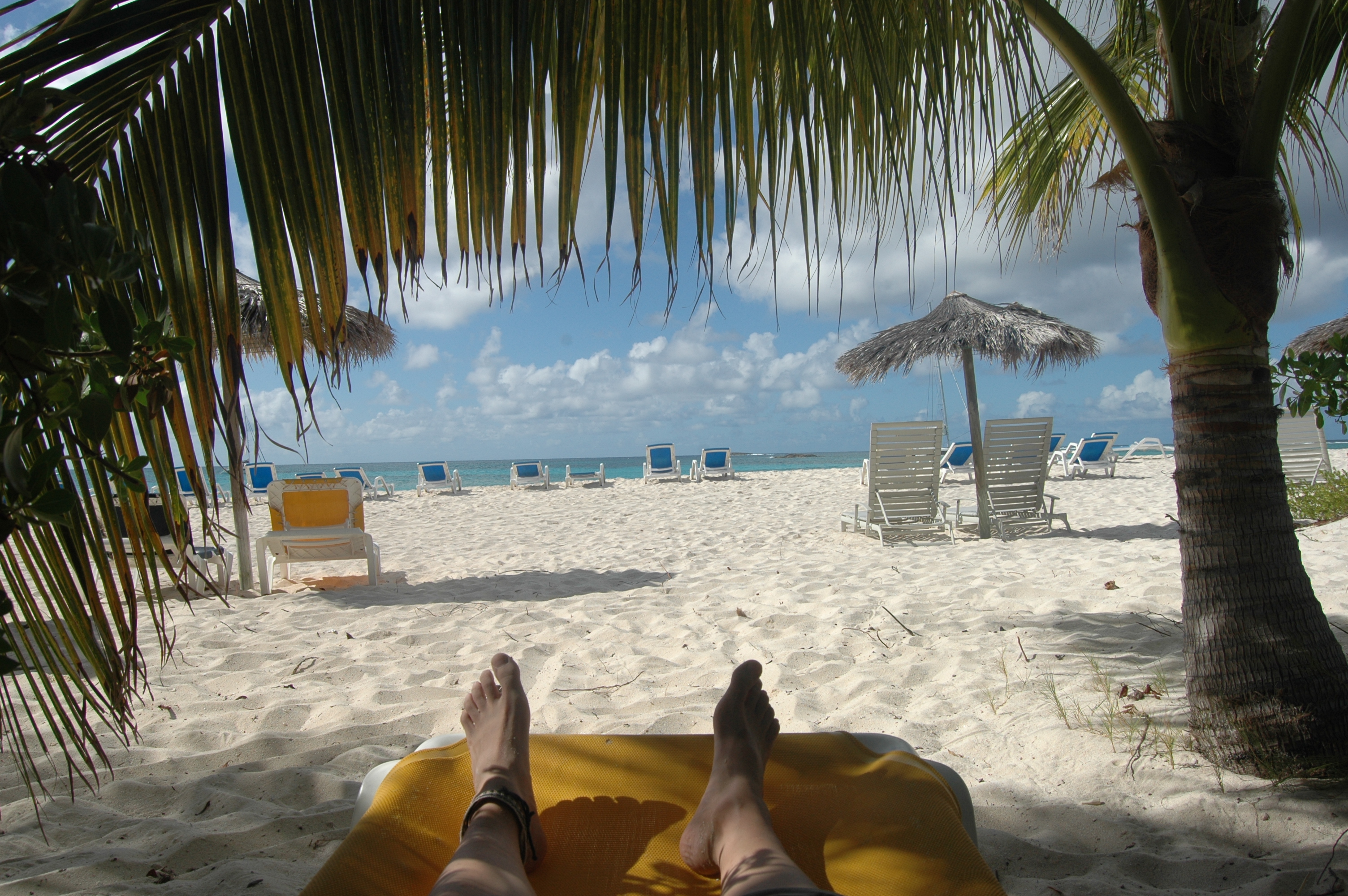Methods
Summary
Two species are being studied. These are Brown boobies (Sula leucogaster). Sex can be distinguish by the colour of the beak: pink in females (left), blue in males (right).
And Masked boobies (Sula dactylatra). In this species both sexes look the same, but females are larger (as in brown boobbies).
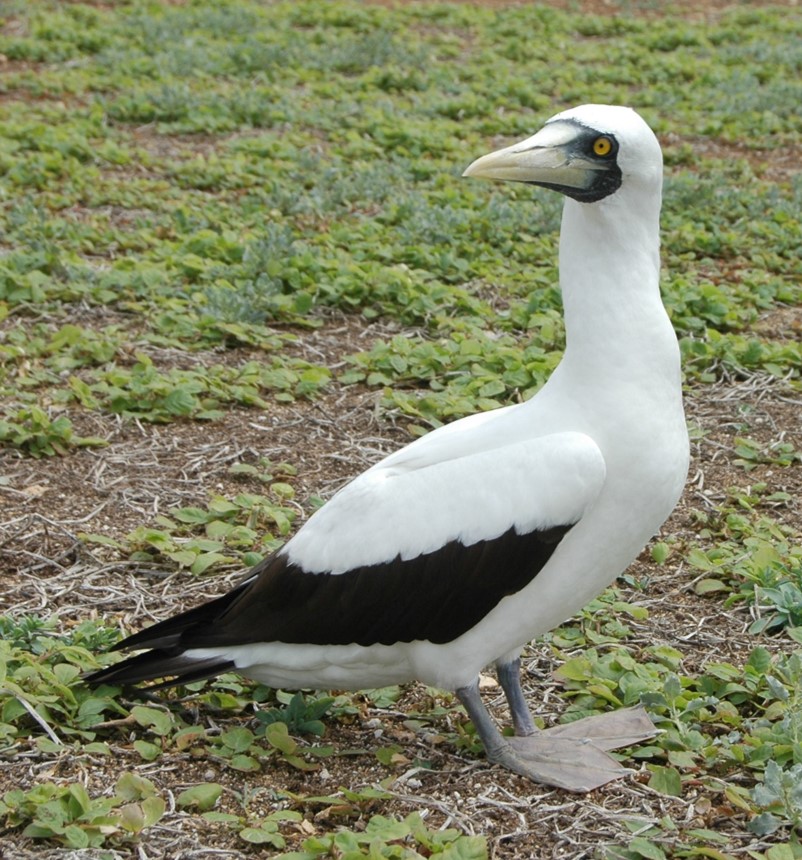
2 different seabird colonies (in Prickly Pear and Dog Island, see a map below) are being monitored since the first stages of the breeding. The nests are checked every 1-3 weeks to record number of eggs and chicks, and if the pairs succeed or when they failed (stage: eggs, nestlings, fledglings).
We have measured the size and weight the eggs. Nests have been photographed to analyse the material they used to built them. Temperature sensors have been deployed to investigated if there are thermic differences between nesting places at the colonies.

Chicks will be measured to see how quick they growth. This indicates how good are the parents raising them.
Adults will be captured, measured, photographed, and a small blood sample will be extracted. But no worries! Everything take less than 10 minutes and they come back to the nest in less than 3 minutes. Chicks won't be alone for very long.
Some adults will be deployed with a GPS-logger, that is a small device which tell us the locations where the bird have been, thus we can calculate how long time they spend with the chick versus foraging, and where do they go to forage.
Challenges
First, simply the location: we are in an island in the middle of the Caribbean!
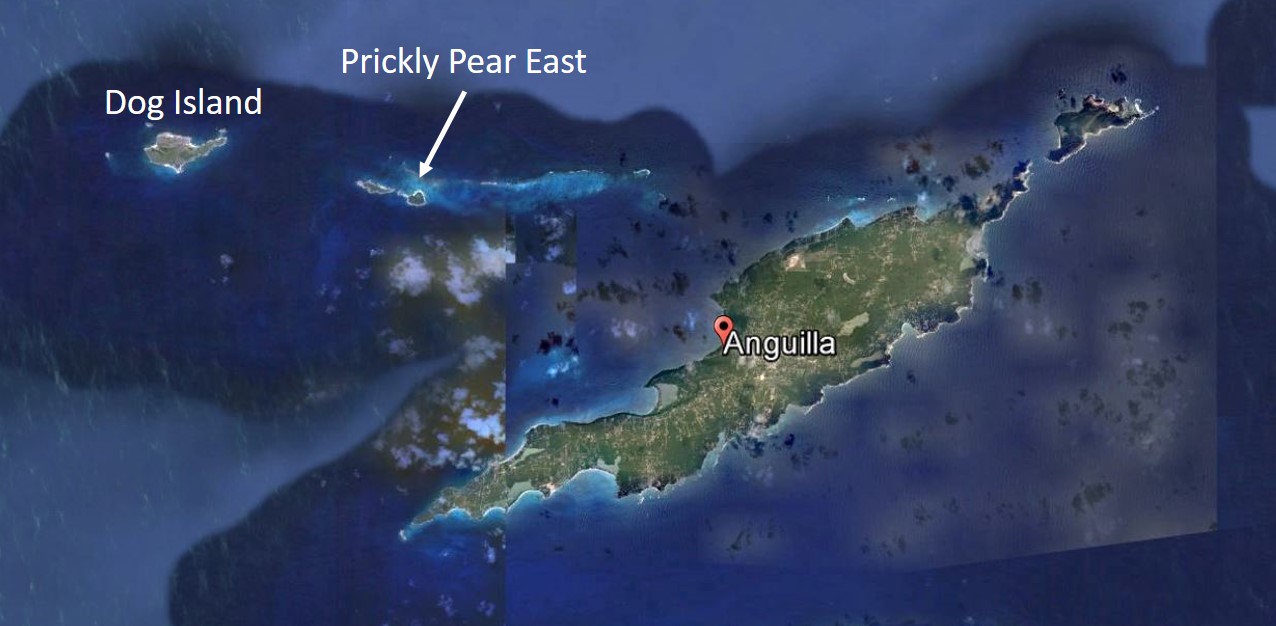
It is difficult finding research material here (even simple things, like alcohol). But it can be solved with detailed planning and patience.
Another big challenge is, of course, the weather and the sea.
But nothing can be done against those. If there are strong winds and big waves, we should stay in mainland Anguilla. The safety of the researchers and the subjects -in this case, the birds- are of ultermost importance and the first priority.
Last but not least: keeping the focus!
When you are doing fieldwork in the paradise, you can be easily distracted. Also, the rythm in the Caribbean is very different from the rythm in a office in the city. But with discipline and setting goals, is something that can be overcame.
Pre Analysis Plan
After fieldwork, Alejandra will travel with the samples to a laboratory in Europe, to do molecular analyses. Feathers will be subjected to a protocol to extract corticosterone, a stress hormone, that will be quantified. Plasma -a component of the blood- will be subjected to another protocol to measure prolactine, a hormone responsible for reproduction decisions.
The pictures will be analysed with especial software to measure several components of colour (chroma, hue).
Data from GPS-loggers will be subjected to spatial analyses with ArcGIS. We will create maps to reflect their foraging patters.
Eventually, all data will be incorporated in databases to conduct an exploratory analyses (mainly graphically). A set of preliminary models with biologically-relevant variables will be built. Then model selection will take place, to select the model that fit the data the best.
Protocols
This project has not yet shared any protocols.

